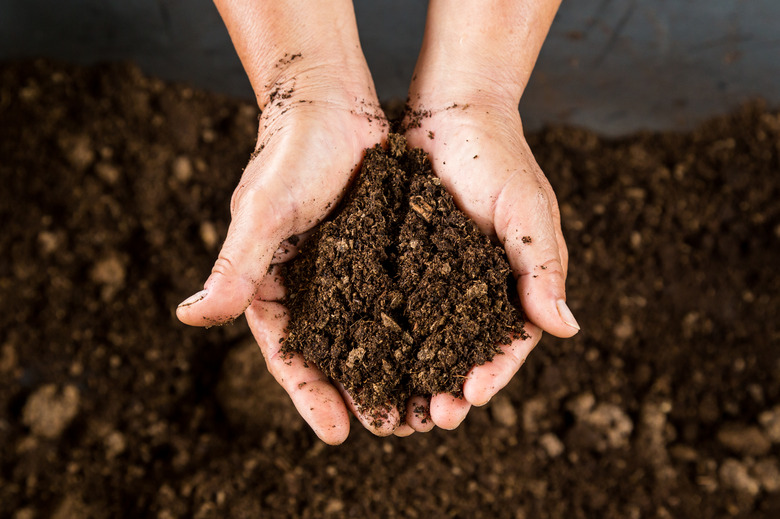Soil Types In North Carolina
North Carolina is a state of diverse geography, ranging from sandy barrier islands on the Atlantic coast to the rugged Appalachian Mountains on its western border. With these diverse ecosystems comes a broad range of soils within the state. Divided into three physiographic regions — Mountains, Piedmont and Coastal Plain — North Carolina has over 400 different types of soil, though certain soil types are more common to the state.
TL;DR (Too Long; Didn't Read)
With a diverse geography, North Carolina is home to more than 400 types of soil. Most common, though, are Cecil soil, found in the Piedmont region; sandhill soil found in the Coastal Plain; and organic soil found in wetlands.
Cecil Soil of the Piedmont Region
Cecil Soil of the Piedmont Region
Cecil soil is a type of deep, well-drained soil found on the slopes and ridges of the Piedmont region. This soil is formed from weathered felsic, igneous and metamorphic rock. Felsic rock consists of feldspar and other light-colored minerals; igneous rock is produced under intense heat; and, metamorphic rock is rock that has been changed by heat and pressure. According to the Natural Resources Conservation Service (NRCS), Cecil soil is the most common type of soil in North Carolina, covering over 1.6 million acres. In fact, Cecil soil is the official state soil of North Carolina. Over half of the Cecil soil in the state is cultivated for growing crops like corn, tobacco, and cotton. The other half is used for pastures and forestland. Cecil clay, a fertile red clay soil containing decomposed granite and quartz, is an important type of Cecil soil found south of the Raleigh Durham area.
Sandhill Soil of The Coastal Plain
Sandhill Soil of The Coastal Plain
Loose, gray, and sandy, sandhill soil is commonly found in the Coastal Plain region of North Carolina. According to the United States Department of Agriculture (USDA), sandhill soil is typically found in ridges or hills and can range from 10 to 50 feet in depth. Often, the top layer of this soil is bleached white with underlying layers ranging in color from brown to reddish-brown. Because sandhill soil is low in organic matter and very dry, it is not well-suited for agriculture. Naturally-occurring plant growth includes longleaf pine, scrub oak and wiregrass. However, certain types of deep-rooted fruit trees, such as apple and peach, can be cultivated in this soil.
Organic Soils of The Wetlands
Organic Soils of The Wetlands
Organic soils, or histosols, are typical in wetland areas such as marshes, swamps and bogs. Organic soils form in areas where high rainfall and poor drainage allow organic matter to collect over time. According to the USDA, North Carolina has over 1 million acres of organic soils. Organic soils are mostly in the tidewater and lower coastal regions of the Coastal Plain, although they can be in almost any area of the state. Organic soils are often black and mucky and contain high amounts of peat, which is partially decomposed vegetation. For example, the top layer of soil found in the Pocosin Lakes National Wildlife Refuge — a wetland near Columbia, North Carolina — is predominately composed of peat. Other locations in eastern North Carolina home to organic soils include the Great Dismal Swamp, Croatan National Forest, and the Green Swamp.
Cite This Article
MLA
Williams, Charlene. "Soil Types In North Carolina" sciencing.com, https://www.sciencing.com/north-carolina-soil-types-6912779/. 19 April 2018.
APA
Williams, Charlene. (2018, April 19). Soil Types In North Carolina. sciencing.com. Retrieved from https://www.sciencing.com/north-carolina-soil-types-6912779/
Chicago
Williams, Charlene. Soil Types In North Carolina last modified August 30, 2022. https://www.sciencing.com/north-carolina-soil-types-6912779/
